Diego Geraldo
Real-Time Surface-to-Air Missile Engagement Zone Prediction Using Simulation and Machine Learning
Dec 05, 2023Abstract:Surface-to-Air Missiles (SAMs) are crucial in modern air defense systems. A critical aspect of their effectiveness is the Engagement Zone (EZ), the spatial region within which a SAM can effectively engage and neutralize a target. Notably, the EZ is intrinsically related to the missile's maximum range; it defines the furthest distance at which a missile can intercept a target. The accurate computation of this EZ is essential but challenging due to the dynamic and complex factors involved, which often lead to high computational costs and extended processing times when using conventional simulation methods. In light of these challenges, our study investigates the potential of machine learning techniques, proposing an approach that integrates machine learning with a custom-designed simulation tool to train supervised algorithms. We leverage a comprehensive dataset of pre-computed SAM EZ simulations, enabling our model to accurately predict the SAM EZ for new input parameters. It accelerates SAM EZ simulations, enhances air defense strategic planning, and provides real-time insights, improving SAM system performance. The study also includes a comparative analysis of machine learning algorithms, illuminating their capabilities and performance metrics and suggesting areas for future research, highlighting the transformative potential of machine learning in SAM EZ simulations.
Supervised Machine Learning for Effective Missile Launch Based on Beyond Visual Range Air Combat Simulations
Jul 09, 2022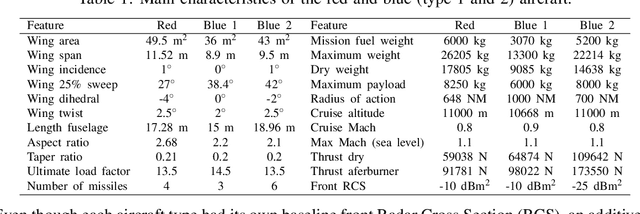
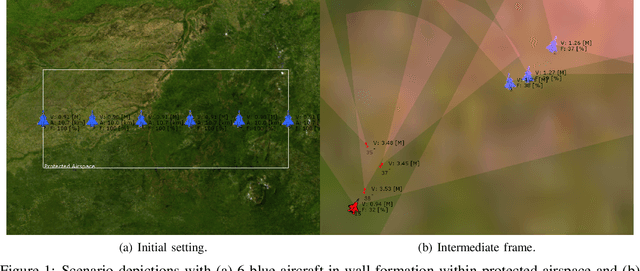
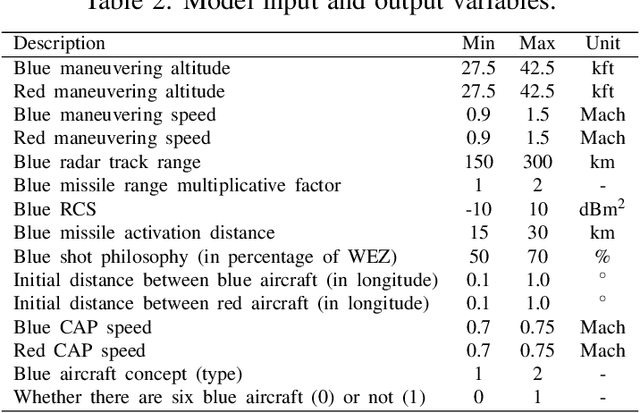
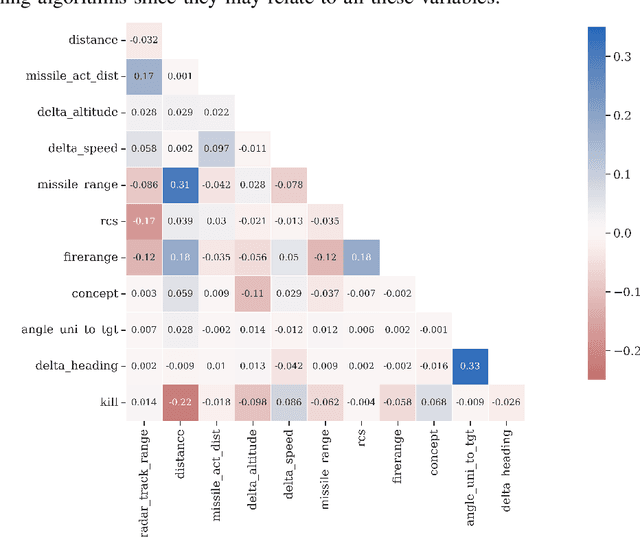
Abstract:This work compares supervised machine learning methods using reliable data from constructive simulations to estimate the most effective moment for launching missiles during air combat. We employed resampling techniques to improve the predictive model, analyzing accuracy, precision, recall, and f1-score. Indeed, we could identify the remarkable performance of the models based on decision trees and the significant sensitivity of other algorithms to resampling techniques. The models with the best f1-score brought values of 0.379 and 0.465 without and with the resampling technique, respectively, which is an increase of 22.69%. Thus, if desirable, resampling techniques can improve the model's recall and f1-score with a slight decline in accuracy and precision. Therefore, through data obtained through constructive simulations, it is possible to develop decision support tools based on machine learning models, which may improve the flight quality in BVR air combat, increasing the effectiveness of offensive missions to hit a particular target.
Weapon Engagement Zone Maximum Launch Range Estimation Using a Deep Neural Network
Nov 17, 2021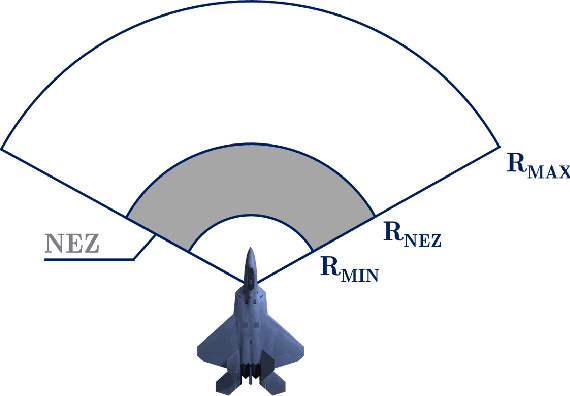
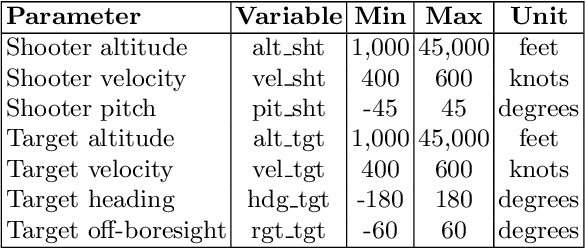
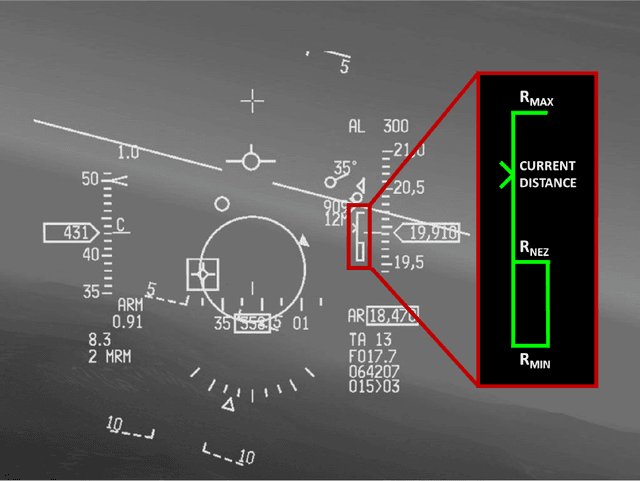
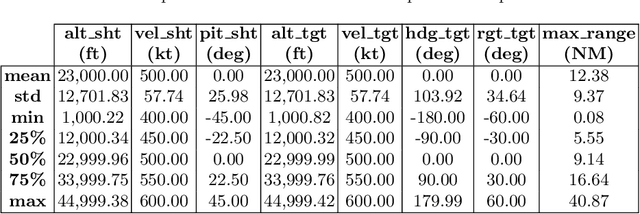
Abstract:This work investigates the use of a Deep Neural Network (DNN) to perform an estimation of the Weapon Engagement Zone (WEZ) maximum launch range. The WEZ allows the pilot to identify an airspace in which the available missile has a more significant probability of successfully engaging a particular target, i.e., a hypothetical area surrounding an aircraft in which an adversary is vulnerable to a shot. We propose an approach to determine the WEZ of a given missile using 50,000 simulated launches in variate conditions. These simulations are used to train a DNN that can predict the WEZ when the aircraft finds itself on different firing conditions, with a coefficient of determination of 0.99. It provides another procedure concerning preceding research since it employs a non-discretized model, i.e., it considers all directions of the WEZ at once, which has not been done previously. Additionally, the proposed method uses an experimental design that allows for fewer simulation runs, providing faster model training.
Engagement Decision Support for Beyond Visual Range Air Combat
Nov 17, 2021
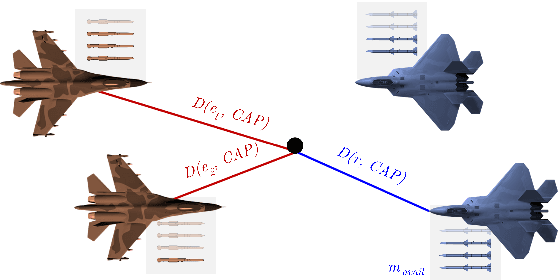
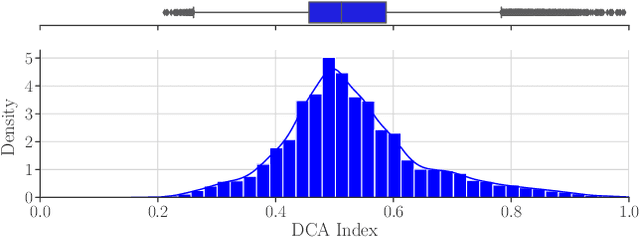
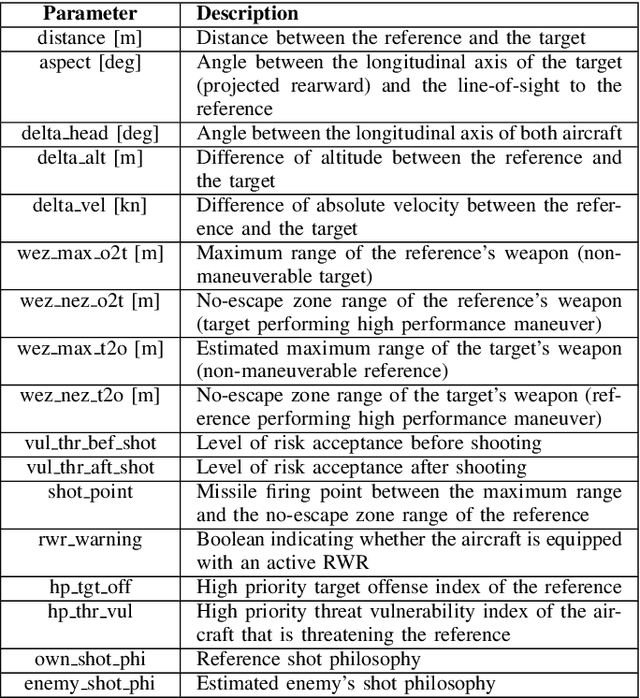
Abstract:This work aims to provide an engagement decision support tool for Beyond Visual Range (BVR) air combat in the context of Defensive Counter Air (DCA) missions. In BVR air combat, engagement decision refers to the choice of the moment the pilot engages a target by assuming an offensive stance and executing corresponding maneuvers. To model this decision, we use the Brazilian Air Force's Aerospace Simulation Environment (Ambiente de Simula\c{c}\~ao Aeroespacial - ASA in Portuguese), which generated 3,729 constructive simulations lasting 12 minutes each and a total of 10,316 engagements. We analyzed all samples by an operational metric called the DCA index, which represents, based on the experience of subject matter experts, the degree of success in this type of mission. This metric considers the distances of the aircraft of the same team and the opposite team, the point of Combat Air Patrol, and the number of missiles used. By defining the engagement status right before it starts and the average of the DCA index throughout the engagement, we create a supervised learning model to determine the quality of a new engagement. An algorithm based on decision trees, working with the XGBoost library, provides a regression model to predict the DCA index with a coefficient of determination close to 0.8 and a Root Mean Square Error of 0.05 that can furnish parameters to the BVR pilot to decide whether or not to engage. Thus, using data obtained through simulations, this work contributes by building a decision support system based on machine learning for BVR air combat.
 Add to Chrome
Add to Chrome Add to Firefox
Add to Firefox Add to Edge
Add to Edge